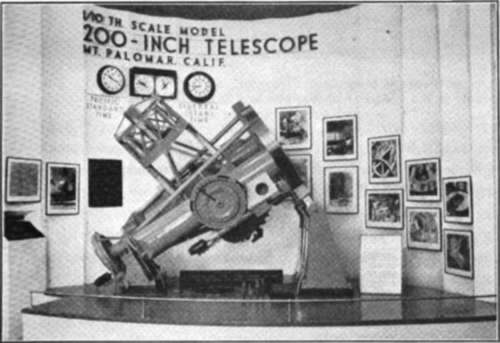Sun Spots
Description
This section is from the book "Time Out for Living", by Ernest DeAlton Partridge and Catherine Mooney. Also available from Amazon: Time Out for Living.
Sun Spots
If the eyepiece is taken from a small telescope or powerful spyglass and a sheet of white paper moved back and forth at the place where the eyepiece was, a position will soon be found where a distant image of the sun is seen very distinctly on the paper. Then, frequently, it will be possible to see some spots on the sun. If the small telescope or spyglass is equipped with a "solar eyepiece," it is possible to look directly at the sun and see any sun spots which may be visible. Never look directly at the sun through any spyglass or even opera glasses without the protection of a solar eyepiece. Unless the observer's eyes are protected properly, the dazzling brightness of the sun will very seriously injure them, and may cause permanent blindness.
If an observer counts these sun spots and keeps a record day by day, he will discover that there are years when the sun spots are numerous and again years when there are few to be seen. The years of plenty return about every eleven years. However, that figure is only an average. Sometimes the interval between the year of most spots is considerably longer than eleven years and then again it may be somewhat shorter. If an observer frequendy examines the sun and keeps a record of the number of spots, he can determine for himself on what year and month the sun had its maximum number of spots.

Sun Spots, as seen through a telescope. They look as if they were holes in the incandescent surface of the sun. They are really storms, and we are looking down from above. On this scale the earth would be a round dot not much bigger than a period on this page.
There is a mysterious connection between the number of sun spots and the aurora borealis, or northern lights. Those who live in the northern states have seen on many occasions the brilliant auroral streamers on the northern horizon. If a record is kept of the appearance of the northern lights, it will be found that when there are numerous sun spots, there are almost surely brilliant auroral displays. Also, if an unusually large spot appears on the sun, there is apt to be an exceptionally bright display of the aurora. Of course, a sun-spot observer in a southern state should co-operate with an aurora observer in a northern state and exchange data on the heavens with him.

The working model of the great telescope at Mount Palomar, California, which belongs to the California Institute of Technology, is shown in this photograph. The mirror at the base of the openwork tube of the instrument is 200 inches in diameter. This model is one tenth the size of the actual telescope. The new observatory of the California Institute of Technology, when completed, will consist of two main features: (1) the telescope, with its building, dome, and auxiliary equipment, and (2) a well-equipped astrophysical laboratory.
Continue to:


